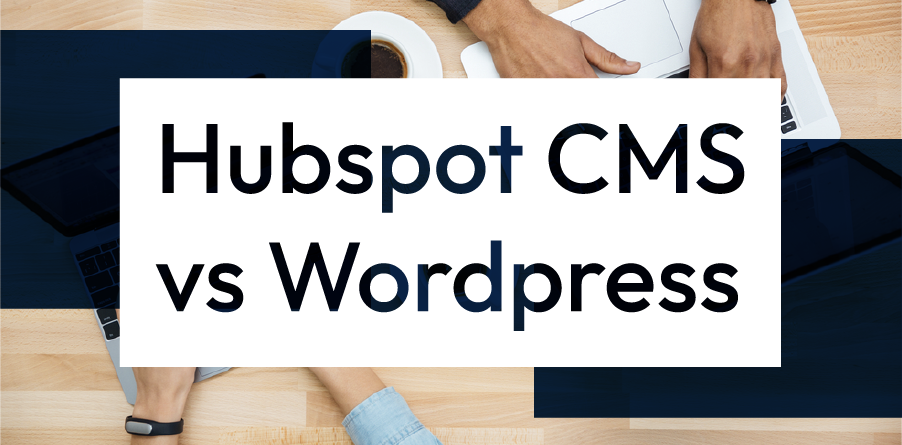Increase Conversion Rates

As a business owner, finding ways to increase your website conversion rate is one of the most critical endeavors you can undertake – if not the most critical. After all, it doesn't matter how much traffic you're getting if everyone decides to window shop but never buys anything.
In fact, your website’s conversion rate is an indicator of how well designed and developed your website is. An effective website turns traffic into customers. Below, we’ll explore a variety of website conversion tools and techniques that can effectively increase your conversion rate.
But First, Define Your Conversion Goals
Before you can measure or improve your conversion rate, you must define what a conversion looks like on your website.
A few common conversion goals include page visits, time on a page, clicks on links, or form submissions. Once your goals are defined for important website pages, you can make adjustments and measure success.
1. Use a Conversion Rate Optimization Tool
This is perhaps the easiest way to start. Conversion rate optimization (CRO) tools, like Crazy Egg, create heatmaps, scrollmaps, and referral traffic and audience demographic reports to identify areas on website pages where design changes may be necessary to increase conversions. Crazy Egg offers a free 30 day trial, so you can test their tools before making a purchase.
HubSpot’s Website Grader, powered by Google Lighthouse, provides a similar report.
CRO tools are excellent if you have the time and expertise to analyze data and make appropriate adjustments. Some busy business owners prefer to outsource this task. Certain internet marketing agencies, like RivalMind, offer CRO services that combine the best conversion rate optimization tools in the industry with digital experts, optimizing websites for real bottom line growth.
2. Optimize Your Forms
Your forms should be crafted for your target customer.
For some businesses, simply receiving a submission is most important, regardless of the quality of lead. In this case, form submission is all about eliminating hesitation. If your forms have unnecessary fields, remove them. Users are more likely to complete forms that don’t take a lot of time and don’t demand a plethora of personal information.
Other businesses are more concerned about the quality of the lead than the quantity of submissions or applications. In this case, publish longer forms that only a truly serious lead might complete, without adding superfluous fields, of course.
In both scenarios, identify the information that is essential to complete your predetermined goals and design your forms with this in mind.
3. Add a (Tasteful) Pop-Up to Your Website
Pop-ups have the potential to dramatically increase conversion rate. A study by Sumo discovered that the average conversion rate for pop-ups is almost 3.10 percent – with the best performing reaching 9.28%.
However, pop-ups must be done right. Here are a few guidelines to follow:
- Make it easy to close the pop-up.
- Choose an enticing offer by testing multiple.
- Make sure the pop-up only appears once per user.
- Delay the pop-up for at least 30 seconds.
Following these guidelines could hugely boost your website conversion rate without increasing visitor annoyance.
4. Include Social Proof
Social proof helps visitors feel comfortable with your brand.
In an article exploring the power of social proof in marketing, Sprout Social wrote, “When people shop, they look for reviews, recommendations and ways that others have used a product before making their decision… 91% of online shoppers read online reviews before making a purchase.”
Case studies, testimonials, reviews, logos, and awards fall into the category of social proof. Listing the logos of clientele to demonstrate your portfolio of experience can also put visitors at ease. At RivalMind, we also include video testimonials on important pages.
Angie Schottmuller, growth marketing expert, wrote, “If quality social proof buffers notable uncertainty, get ready for some remarkable conversion impact – in some cases up to 400% improvement.”
Consider adding testimonials, reviews, case studies, or logos to your critical website pages.
5. Add Live Chat
Prospective customers appreciate the ability to communicate with your organization – quickly. Live chat provides an avenue for this. A contact page, phone number, and other CTAs should still be listed in prominent places on your site, but live chat can meet a visitor’s need immediately.
Live chat can prevent you from losing customers, giving visitors a channel to pose a question or concern right away. If the concern is alleviated by a customer service representative or salesperson, the prospective customer could decide to convert.
6. Simplify Key Website Pages
How complicated are your most important pages?
Consider your homepage.
If I landed on your homepage for the first time, could I decipher who you are, what you do, and why you do it within moments? Your who, what, and why are the most important pieces of information you can give a prospective customer.
Complexity stifles the user experience. If certain elements are distracting or superfluous, remove them. Consider what your visitors need to know and stick with that. For example, your page may include a headline, subheading, brief section about your benefits/ offerings, a piece of social proof, and some engaging visual elements – and that’s it.
Use a website conversion tool or an outsourced CRO service to identify distracting sections on your pages and eliminate them.
7. Make Your Initial CTA Easy

Your initial CTA should be really simple for the user to complete. For example, ask for an email address rather than an entire form to start. If your first point of contact is easy, users will be encouraged to complete what they started and provide additional information.
If the visitor decides to leave after completing the initial step, you still have a piece of information.
8. Create Abandoned Cart Campaigns
Don’t forget about the customers who come to your site, add something to their cart, and decide not to check out – yet. We’ve all done this, and visitors have probably done it on your ecommerce website as well.
For these prospective customers, consider creating an abandoned cart email campaign with an enticing reminder to complete their purchase. In total, the campaign could include two or three emails.
9. Make Your CTA Engaging
Take some time to improve your CTA copy. Steer away from generic appeals like “sign up,” “get access,” or “start trial,” and think outside the box. For example, consider a positive CTA that starts with “Yes,” like “Yes, I want my free sample!” Or replace “Shop Now” with “See What’s New.”
In the example below, we use “Get Started,” placing the initiation of business growth in the hands of the determined business owner.
A/B test CTAs to determine what resonates best with your target audience and look to businesses doing CTAs well for insight.
Finally, consider where your CTA appears on the page. Though your important pages will likely only have one action, you may include a few separate, easily accessible CTAs that lead to that conversion. A user should be able to take action from anywhere on the page.
The Signals of User Behavior
After spending a significant amount of time optimizing to increase conversion rates, the next step is identifying if your website is actually influencing visitors? Start with these three simple indicators of user behavior, found on Google Analytics.
Behavior Flow
First, if you haven't yet integrated your site with Google Analytics, now is the time. If you already have GA, be sure to regularly check the Behavior Flow section. In this view, GA does a good job of laying out what a user does once he/she visits your website, showing a clear representation of the most common pages users are entering through (and exiting from).
As you’re browsing this section, consider a few important questions:
- Are users finding what they're looking for?
- Are they dropping off in the middle of completing a conversion?
Review this section regularly and test changes as needed.
Referral Traffic
Next, consider where your users are coming from.
GA again comes into play here as you determine the source of your traffic. One way to check the source is through Audience – Acquisition – Overview. From here, gauge how much of your traffic is organic, direct, social, or referral. Organic traffic means somebody used Google (or another search engine) to find your site. Referrals indicate they found you through another site where your link was present.
This is also a good time to weed out any spam visitors. While there is a setting to exclude known bots, you also should manually review these and add any new spam bots to the referral exclusion list.
Bounce Rates
One of the best ways to determine if visitors are engaging with your content is by reviewing bounce rates – the percentage of visitors who leave your site after viewing one page. This is especially important to monitor after trying new conversion rate optimizations. If you start to see your bounce rate climb, you may need to reconsider your strategy. Be sure you are leaving annotations in Google Analytics any time you make a major change to your site so you can have a clearer picture when you return months later to review bounce rates and other user behavior.
Is Your Website Built to Convert?
Conversion rate is undeniably tied to your website. If your online conversion rates are low, it might be time to consider an upgrade.
At RivalMind, we often wrestle with the disparity between great SEO results, like increased website visits, and bottom-line impact. Ultimately, one should lead to the other – if not, your SEO is not working. If you’re seeing good SEO results without bottom-line impact, your website may be the culprit. Let us take a look.
Get in touch at 331-228-9396 or via our online contact form. You’ll receive a prompt reply.

Meet the Author
Harley Helmer
Director of Search Marketing
Harley Helmer is a digital marketing professional with nearly a decade of experience in the industry. Today, he's the head of search marketing strategy at RivalMind, responsible for developing and executing comprehensive SEO campaigns that improve online visibility and boost organic traffic. His pragmatic, no-nonsense approach to marketing – paired with a robust knowledge base – helps him deliver innovative solutions to technical challenges and deliver real client success.
Specialties: SEO Strategy, Google Ads, and Search Marketing Opinions
Looking for more organic website traffic?
Welcome to RivalMind. Our purpose is to help your business thrive. We are a digital marketing agency that offers SEO, PPC, Web Design, Social Media and Video Solutions as tools to our clients for online business development and growth.
Contact us today to get started!
Blog Contact Form
We will get back to you as soon as possible.
Please try again later.




